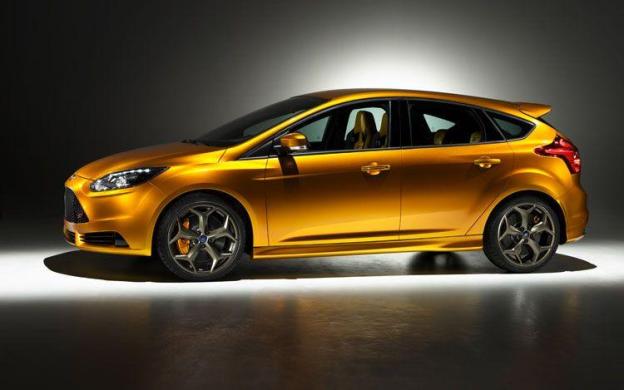 Ford has already confirmed that it is building a sporty version of the Focus hatchback, called the ST (pictured), but engineers in England are brewing something much stronger. A member of Team RS, Ford’s British performance division, told Top Gear that the team is working on a more powerful version, called, appropriately, the RS.
Ford has already confirmed that it is building a sporty version of the Focus hatchback, called the ST (pictured), but engineers in England are brewing something much stronger. A member of Team RS, Ford’s British performance division, told Top Gear that the team is working on a more powerful version, called, appropriately, the RS.
The car has not been officially green-lighted, but that hasn’t stopped Team RS from laying out the specifications. They are demanding at least 320 horsepower, according to Top Gear, compared to the ST’s 247 hp. The engine producing that power will be a 2.3-liter inline-four, with turbocharging and direct-injection. Ford chose this unit for its fuel economy as much as its power potential.
The 2.3 is intended for the Mustang, possibly to coincide with a 2015 refresh. It will have to be modified for transverse mounting and front-wheel drive. The Focus RS’ 320 hp rating would put it in competition with the Subaru Impreza WRX STI, Mitsubishi Lancer Evolution, and Volkswagen Golf R, all of which have four-wheel drive. Nonetheless, Ford will stick with front-wheel drive to save weight and keep costs down, according to Ford Global Performance Vehicle boss Jost Capito.
Front-wheel drive brings torque-steer, when a powerful engine tugs at a car’s front wheels under throttle, but Ford is prepared to deal with that. The first Focus RS, inspired by Ford’s World Rally Championship car, used an electronically-controlled differential to fix the problem. The second RS, powered by a 300 hp inline-five from Volvo, improved on the system. Ford also has a unique suspension setup, called RevoKnuckle, to improve handling.
The RS has quite a pedigree, but it has always been forbidden fruit for American enthusiasts; neither version was available in the United States. Thanks to One Ford, the current American Focus is identical to the European version, and the new RS would use an engine from Ford’s US stable. If the new Focus RS gets the greenlight, it has a better chance than either of the previous models of coming to America.
Before that happens, Ford needs to actually make the car. Does the world need more than one sporty Focus? The second (Europe-only) generation supported ST and RS versions; there was even a limited-edition RS500. It is reasonable to think Ford could structure the the current Focus lineup the same way. Subaru has done the same thing for years, with the hot WRX and the hotter WRX STI.
If a business case can be made, Ford may get a hot hatchback that can take on the best from Japan and Germany.


